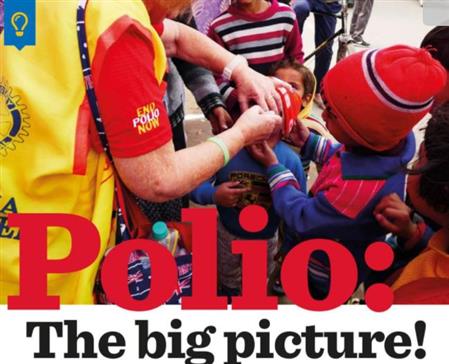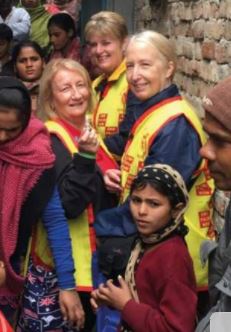
With World Polio Day taking centre stage this month, we thought it a timely opportunity to provide an overview of Rotary's polio eradication efforts to date.
What is Polio - Poliomyelitus, or polio, is a paralysing and potential fatal disease that primarily threatens children under the age of five. It invades the nervous system, potentially causing paralysis. Polio can be prevented by vaccines, but it is not curable.
History - Rotary conducted its first polio immunisation campaign in the Phillipines in 1979 and, based on its success, launched its PolioPlus program in 1985 with a goal to raise US$100 million to immunise the world's children against the debilitating disease. By 1988, Rotary members had raised US$247 million for polio immunisation efforts, which served as the catalyst for the WHO to adapt the resolution to eradicate polio in 1988.
History - Rotary conducted its first polio immunisation campaign in the Phillipines in 1979 and, based on its success, launched its PolioPlus program in 1985 with a goal to raise US$100 million to immunise the world's children against the debilitating disease. By 1988, Rotary members had raised US$247 million for polio immunisation efforts, which served as the catalyst for the WHO to adapt the resolution to eradicate polio in 1988.
At that time there were 350,000 cases of polio every year in 12 countries. The resolution led to Rotary, WHO, UNICEF, the US Centre of Disease Control and Prevention founding the Global Polio Eradication Initiative (GPEI), which was later joined by the Bill & Melinda Gates Foundation and the Vaccine Alliance.
Rotary's main roles in polio eradication are:

- fundraising to support the implementation of polio eradication activities.
- advocacy with donor governments who also provide funding to GPEI.
- advocacy with polio-affected governments to ensure polio eradication remains a priority.
- raising awareness about the benefit of vaccination against polio and the need to finish the job, and
- volunteer engagement, including direct participation in polio immunisation campaigns.
To date, Rotary has committed more than US$2.2 billion dollars and countless volunteer hours to the global effort to eradicate polio and today 19.4 million people who would otherwise have been paralysed are walking due to these efforts.